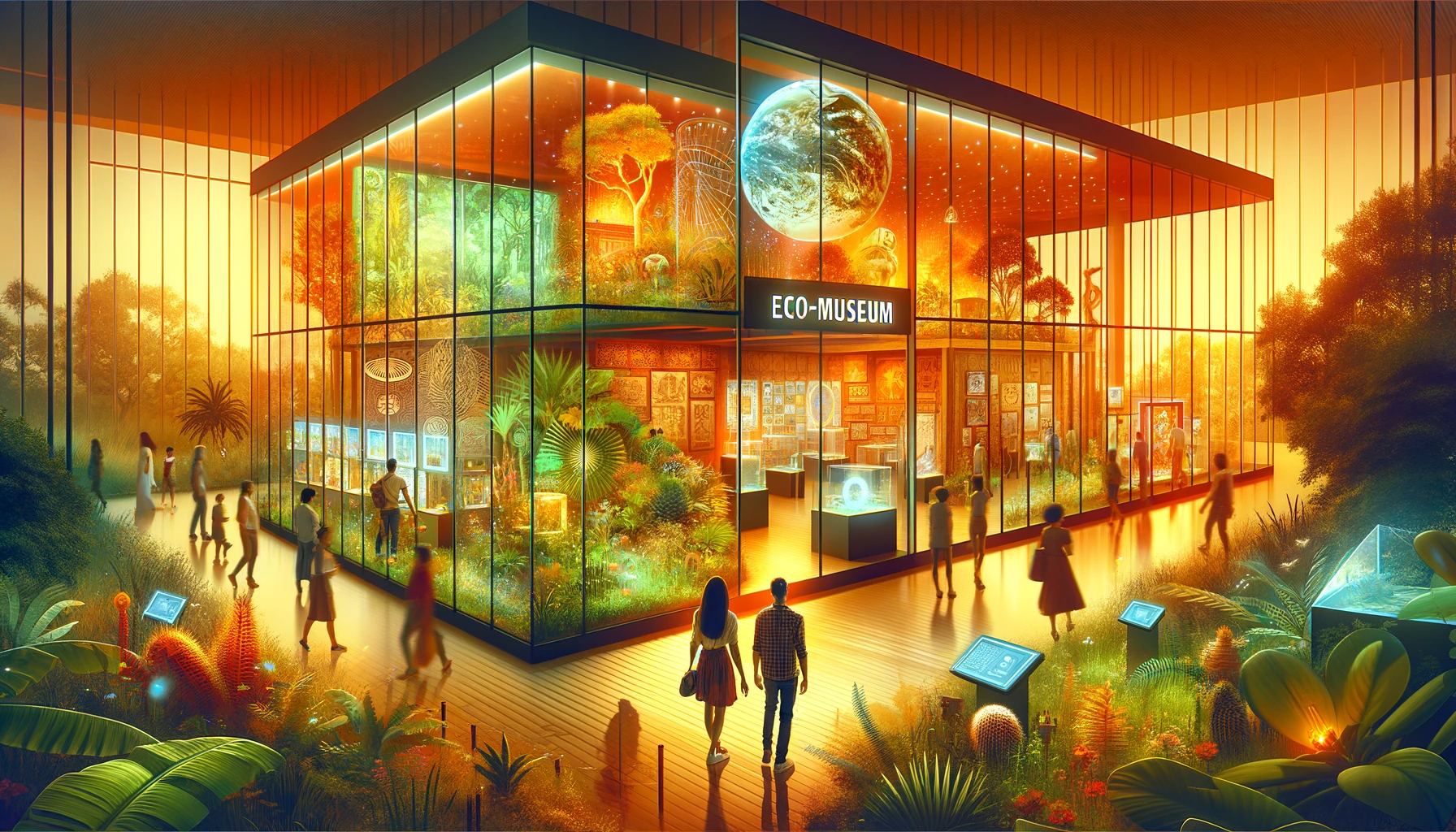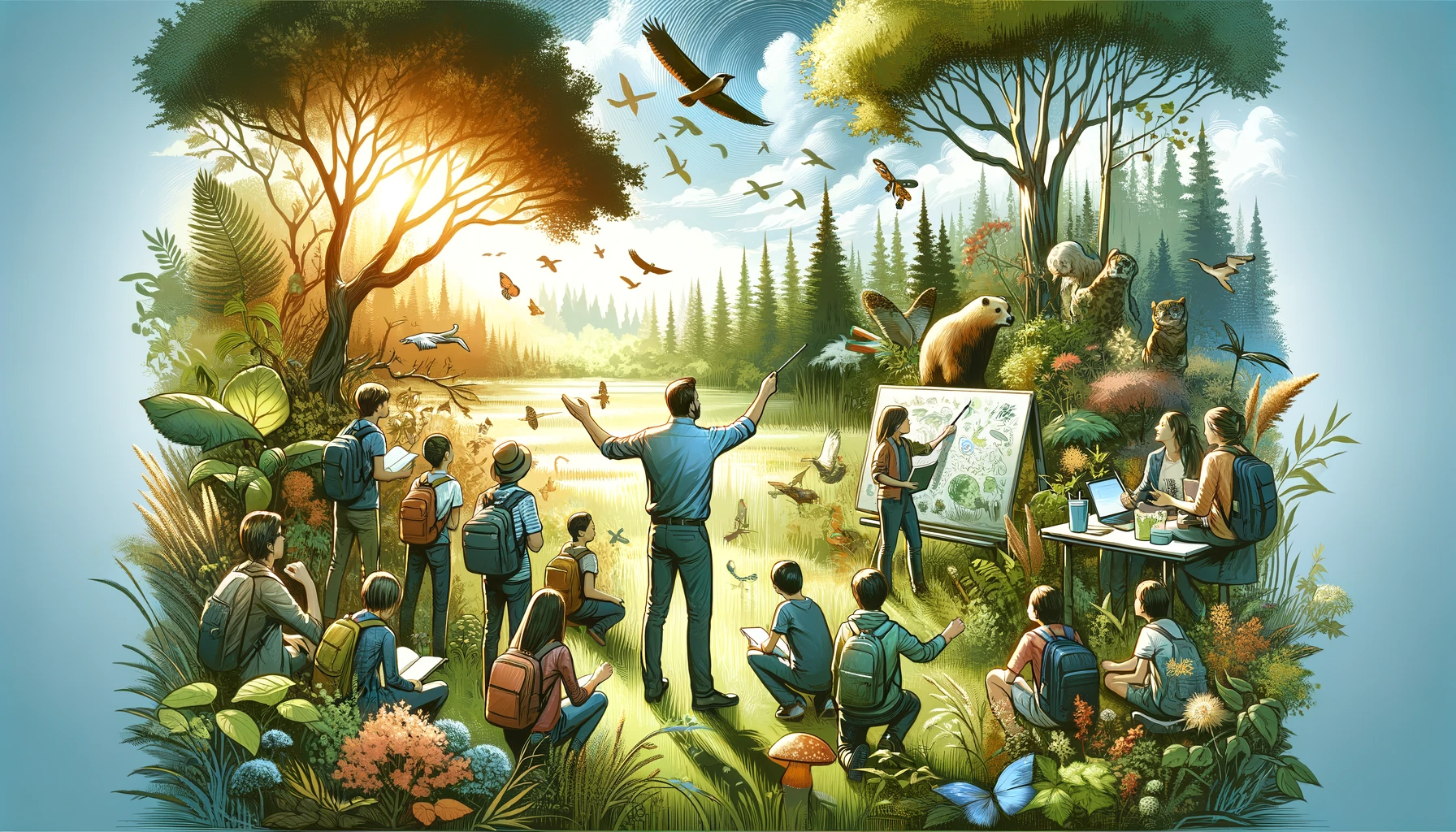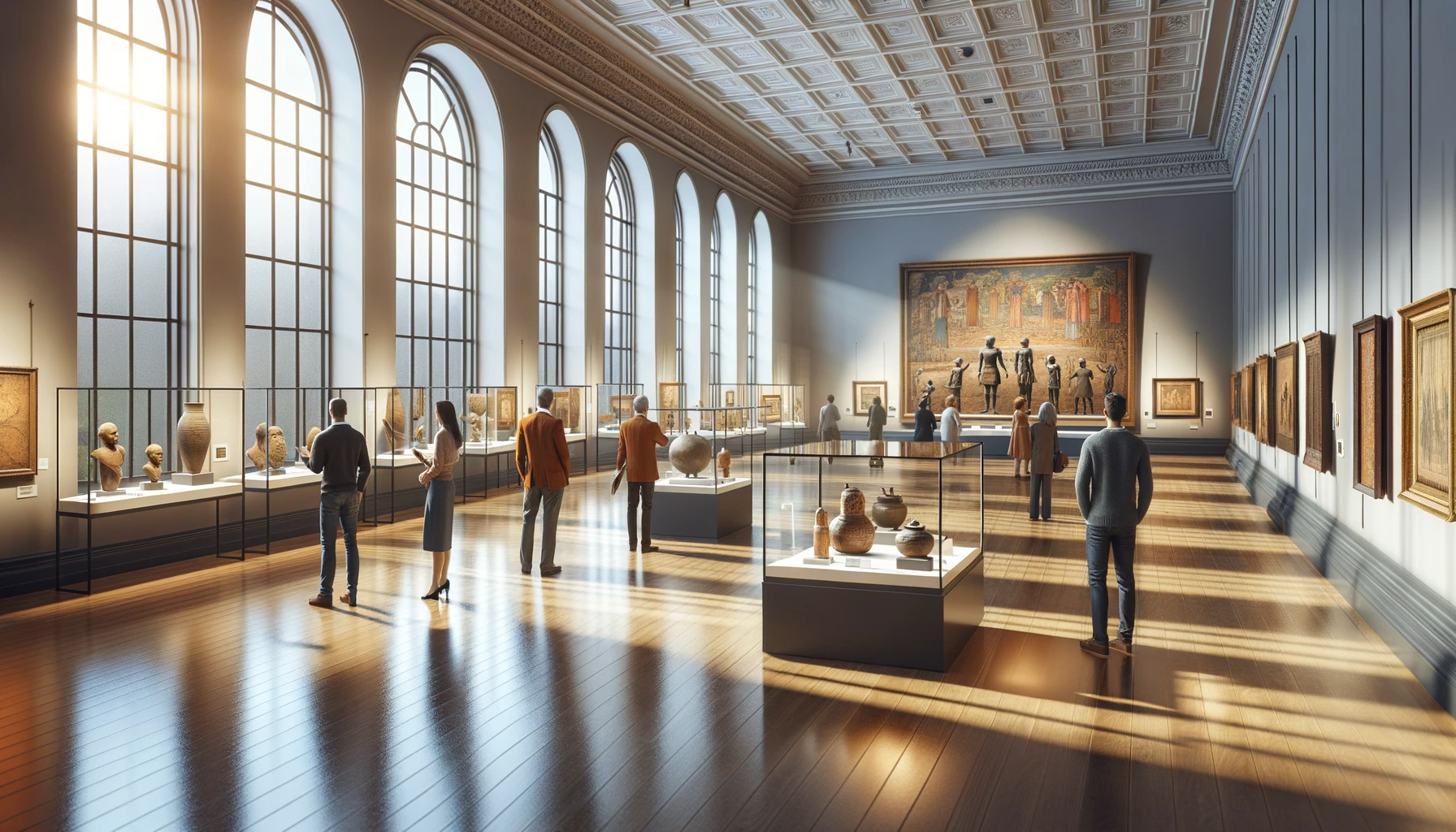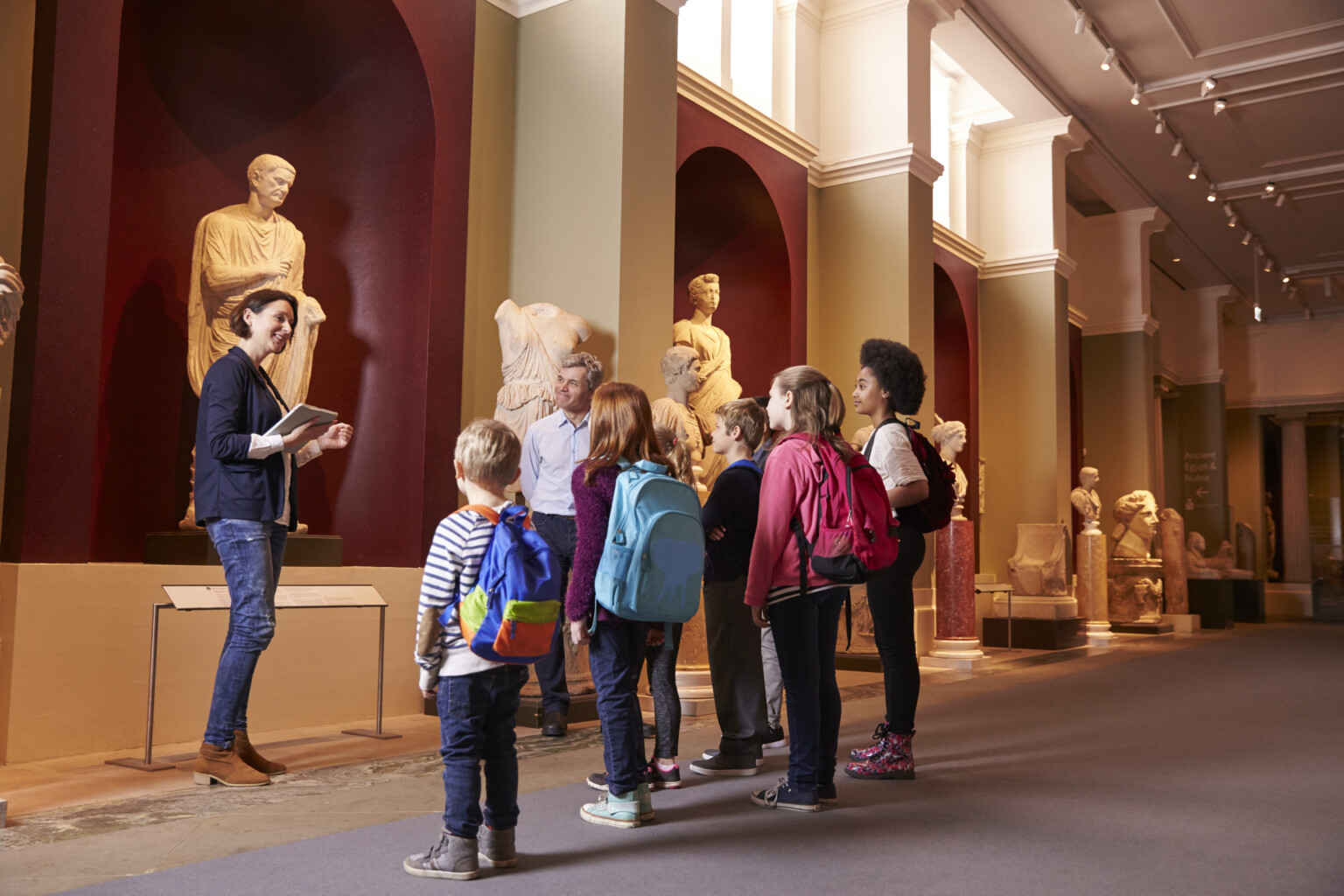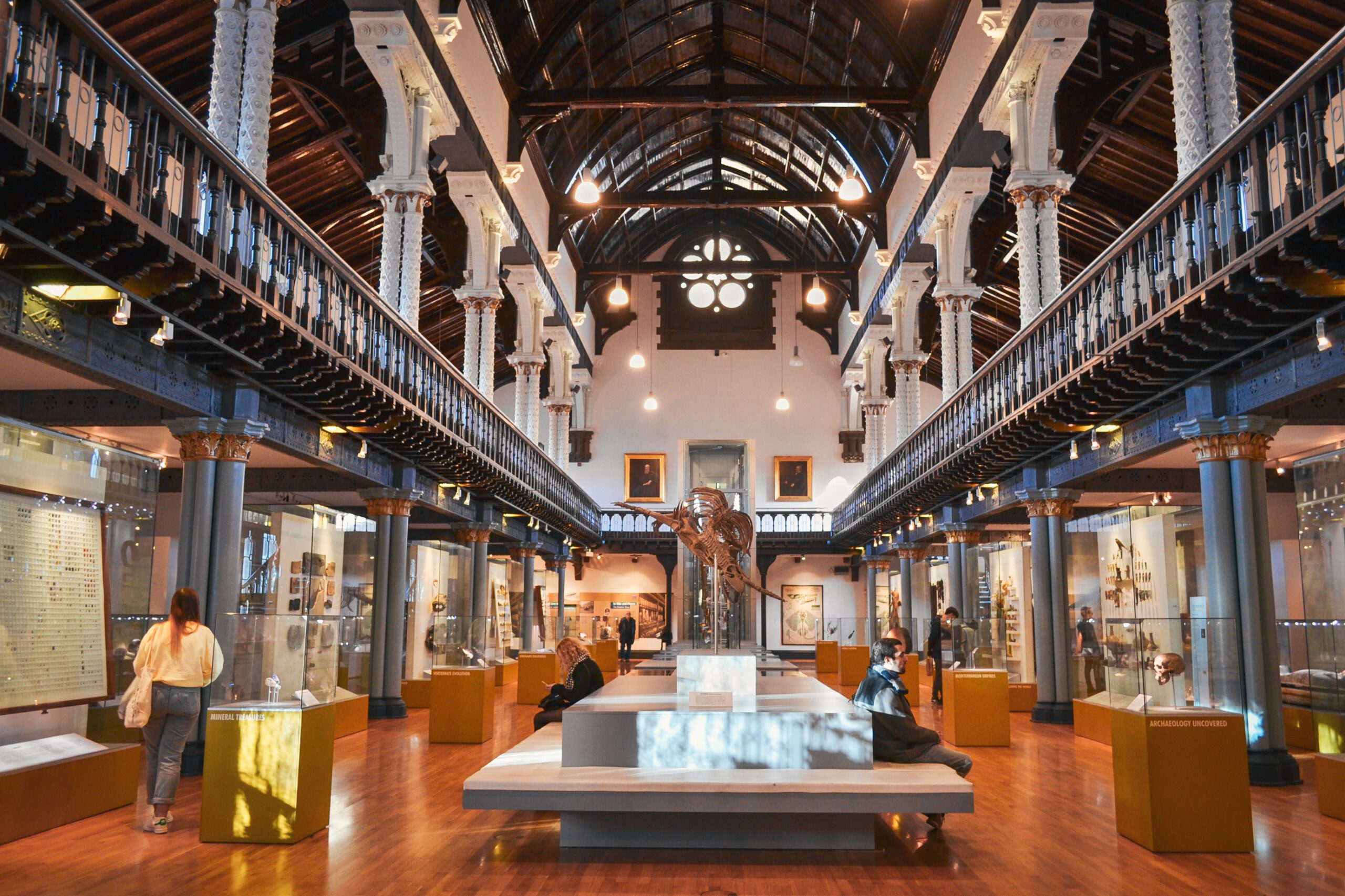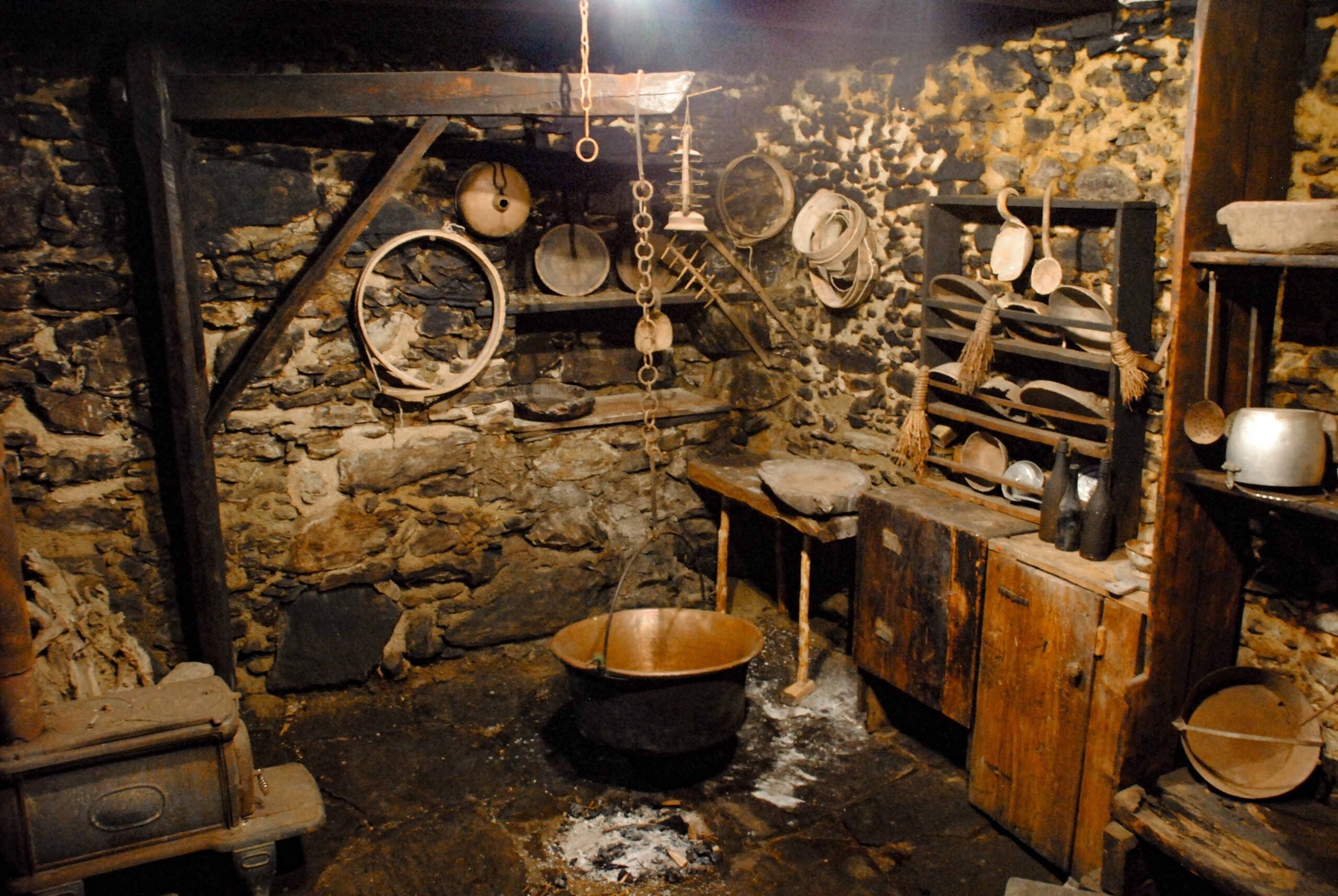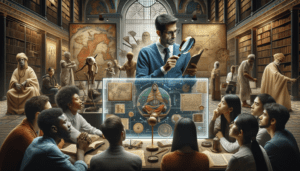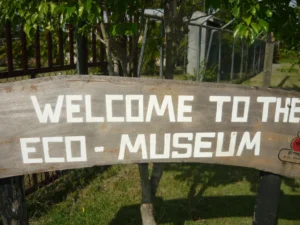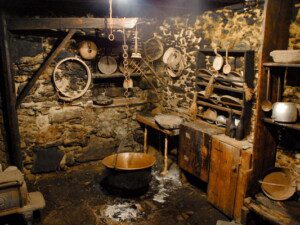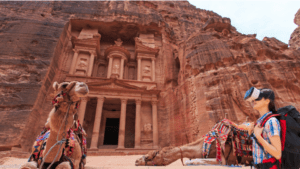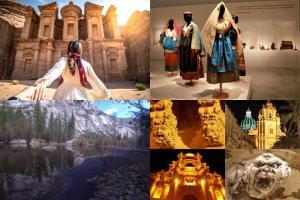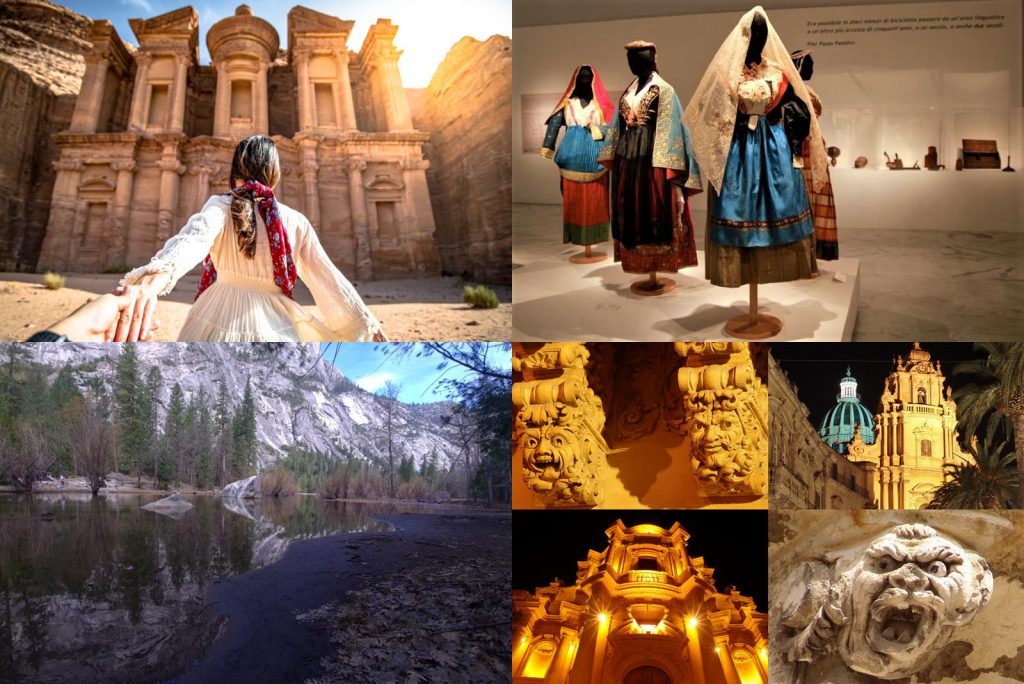Museum Operator: Reference scheme

Scheme C) Unregulated profession built without regulatory references.
The reference scheme is based on the 'modelSkills Cycle' and is in line with the 'Tourism, Arts, Heritage Competence Framework (TAH-CF)'. the TAH-CF is defined in accordance with the European Qualifications Framework (EQF), the Recommendation of the European Parliament and of the Council 2009/C 155/02 (ECVET) and the APNR (Non-Regulated Professional Activities) scheme adopted by UNI for the technical standardization of unregulated professions.”
The scheme is subjected to an initial public survey available to all stakeholders in the cultural tourism supply chain in order to collect comments and contributions useful for improving its contents. All interested parties are invited to improve the scheme by sending their contributions to info@aiptoc.it
Description
PPC11/P3: Museum Operator
The Museum Operator is a professional equipped with the necessary skills to provide specialist support in the planning, creation and management of museum tours. This figure also deals with the daily management of museum activities, reception and custody services, communication and presentation of museum offers to the public. He works in collaboration and under the supervision of the Museum Director, as well as in coordination with the other professional figures responsible for the various sectors of the Museum that may be present depending on the type and size of the Museum itself.
The Museum Operator can carry out his activity both in public and private bodies as an employee or as an external consultant.
Note: The Museum Operator is a professional figure characteristic of small and medium-sized museums, where he takes on an often multipurpose role. This professional can manage tasks that in larger museums are typically entrusted to specialized personnel, such as the head of reception and security services and conservators.
Standards of Reference
- European Qualification Framework (EQF)
- Recommendation 2009 / C 155/02 (European Credit System for Vocational Education and Training - ECVET)
- Law 4/2013 relating to non-regulated professions
Specific tasks and activities
Description of tasks
- T1) Participate in the identification, cataloguing, analysis, interpretation and documentation of the Museum Heritage
- T2) Participate in the planning of museum itineraries
- T2.1: Analyze the reference context
- T2.2: Support for the design of museum itineraries
- T3) Provide specialist support for the management of museum services
- T3.1: Plan the activities and procedures of museum services for the relevant parts
- T3.2: Contribute to ensuring the correct performance of museum services
- T3.3: Contribute to the verification and control of compliance with the applicable legislation in force
- T3.4: Contribute to the monitoring of the museum services provided
- T3.5: Participate in the definition and management of public reception processes
- T4: Contributes to the correct conservation and management of collections.
Optional tasks
- T5: Participate in training and educational activities in the field of museology and in museum-related disciplines
- T6: Interface in a foreign language based on the territorial reference target of visitors
Skills, Knowledge and Autonomy and Responsibility (Skills)
Note: The competences necessary for a profession, which include skills and knowledge, constitute a dynamic whole. These may vary depending on specific territorial contexts and are subject to changes over time due to factors such as technological evolution or other sectoral developments. Therefore, the examples of skills and knowledge presented here are to be considered purely indicative and not exhaustive, and will be subjected to constant revisions and updates.
The specific tasks and activities are listed below, associating the knowledge, skill, autonomy and responsibility requirements for each specific task or activity.
Tasks, activities, skills, knowledge, autonomy and responsibility (competences)
Task T1: Participate in the identification, cataloguing, analysis, interpretation and documentation of the museum heritage
T1 skill
- SQ1: Analysis skills
- SQ2: Ability to synthesize
- SP105: Cultural Heritage relevant to the museum collection (Identify, analyze, document, relate, contextualize, develop historical-comparative relationships)
- ST5: Identify and apply the basic IT and telematic tools
- ST6: Identify and apply IT tools for communication
- ST11: Use information search tools
- SP94: Territorial context from a cultural and historical anthropological point of view (analyze, document, report)
- SP100: Local cultural identities (Identify, analyse, interpret, document, report)
- SP101: Museum heritage (Identify, analyze, interpret, document, report)
- SP126: Interpretation Experience Paths (identify, analyze, document, report)
Based on the type of museum, the general skills indicated must be particularly in-depth in the specific sector to which they belong which can be, for example: Identifying, analysing, documenting, relating, contextualising, developing historical-comparative relationships, identifying the relevance and the historical context - cultural origin of museum assets belonging to one or more of the following (non-exhaustive list):
- SP29: Unesco Heritage (Identify, analyse, document, report)
- SP30: Naturalistic Heritage (Identify, analyze, document, report)
- SP31: Historical, Artistic and Archaeological Heritage (Identify, analyse, document, relate)
- SP32: Intangible Heritage (Identify, analyse, document, report, interpret)
- SP33: Food and Wine Heritage (Identify, analyse, document, relate)
- SP53: Anthropological Heritage (Identify, analyse, document, relate)
- SP54: Paleoanthropological Heritage
Knowledge T1
- KTS13: The Museum Heritage
- KS145: Document management principles, methods and techniques
- KS194: Local cultural endogenous attractions
- KS195: Territorial natural endogenous attractions
- KS196: Induced territorial attractions
- KS237: New museology
- KS246: Methodologies and tools for identifying museum heritage
- KS249: Heritage Interpretation
- KS263: Local cultural identities
- KS250: Lighthouse Convention
- KT6: IT tools for online communication and research
- KS352: Elements of Tangible and Intangible Cultural Heritage
General knowledge of Cultural Heritage must include both tangible and intangible assets and be particularly in-depth in the sectors relating to museum collections. Below is an illustrative and non-exhaustive list
- KTU Unesco Heritage
-
- KTU1: Unesco Conventions on Material Cultural Heritage
- KTU2: The World Heritage List (WHL)
- KTU3: UNESCO Institutions for Cultural Heritage
- KTU4: World Heritage sites at risk
- KTU5: The Proposal List of World Heritage
- KTU6: The procedures for the recognition of Unesco sites
- KTU7: Guidelines for drafting and implementing management plans
- KTU8: Models for the implementation of Management Plans
- KTU9: Sites on the World Heritage List
- KTU10: Unesco Global Biospheres and Geoparks
- KTU11: Creative Cities Network
- KTU12: Unesco Conventions on Intangible Cultural Heritage
- KTU13: The World List of Intangible Cultural Heritage
- KTU14: Other Programs for the protection and promotion of Cultural Heritage
- KTN Natural Heritage
-
- KTN1: Protected Natural Areas
- KTN2: Parks and Nature Reserves
- KTN3: Nature reserves
- KTN4: Natura 2000 network
- KTN5: Sites of Community Interest (SIC)
- KTN6: Special Protection Areas (SPAs)
- KTN7: Special Areas of Conservation (SAC)
- KTN8: The Wetlands
- KTN9: The Geosites
- KTN10: Management tools for protected natural areas
- KTN11: Landscape Plans
- KTN12: The environmental protection and supervisory bodies
- KTN13: Strategies for Biodiversity
- KTI Intangible Heritage
-
- KTI1: Demo-ethno-anthropological heritage (DEA)
- KTI2: Registers of Intangible Heritage
- KTI3: Religious Rites and Festivals (Celebrations)
- KTI4: Crafts, Knowledge and traditional working techniques (Knowledge)
- KTI5: Traditions and Oral Expressions (Expressions)
- KTI6: Performing Arts
- KTI7: Places of Memory and Symbolic Places
- KTI8: Places of Myth and Legends
- KTI9: Places of the Sacred
- KTI10: Places of historical events
- KTI11: Places of historical personalities and culture
- KTI12: Historical places of work
- KTI13: Places of the literary story
- KTI14: Places of television and film storytelling
- KTI15: Ethno-anthropological museum heritage
- KTI16: Ethnomusicological Heritage
- KTI17: Literary parks
- KTS Historical, Artistic and Archaeological Heritage
-
- KTS1: Archaeological Tourism
- KTS2: Parks and Archaeological Sites
- KTS3: Paleolithic, Mesolithic and sites of tourist interest
- KTS4: Neolithic, Metal Age and sites and sites of tourist interest
- KTS5: Main architectural styles
- KTS6: Tourist sites from the Greek and Roman times
- KTS7: Testimonies of Byzantine and Lombard civilization
- KTS8: Sites of tourist interest from the Norman period
- KTS9: Baroque and Rococo
- KTS10: Neoclassical Architecture
- KTS11: The Testimonies of Liberty
- KTS12: The historic villages
- KTS13: The Museum Heritage
- KTE Food and Wine Heritage
-
- KTE1: Typical products
- KTE2: Food and wine tourism
- KTE3: The quality certification of DOP, IGP and TSG food products
- KTE4: Traditional Agri-Food Products
- KTE5: Other forms of recognition of typical products
- KTE6: The wine roads
- KTE7: The production specifications
- KTE8: Organic products
- KTE9: Farmhouses
- KTE10: Quality rural and agri-food districts
Task T2: Participate in the planning of museum itineraries
Activity T2.1: Analyze the reference context
T2.1 skill
- SQ1: Analysis skills
- SQ10: Analyze the explicit, implicit and mandatory requirements (needs) of real and potential users
- SP24: Identify the Strategic Stakeholders
- SP72: Anthropic Context of the Territory (know, analyse)
- SP73: Natural endogenous attractions (know, analyze)
- SP74: Endogenous cultural attractions (know, analyse)
- SP75: Induced Attractions (know, analyze)
- SP92: Documentary Research (applying techniques and methodologies)
- SP94: Knowing how to analyze the territorial context from a cultural and historical anthropological point of view
- SP100: Local cultural identities (Identify, analyze, interpret, document)
- SP101: Museum Heritage (Identify, analyze, interpret, document)
- SP102: Knowing how to analyze the territorial context from a museum point of view
Knowledge T2.1
- KQ33: Quality Management – Techniques for analyzing the requirements (needs) of interested parties
- KS3: Experiential Tourism
- KS4: Sustainable Tourism
- KS5: Accessible Tourism
- KS7: Cultural Tourism
- KS24: Destination Management Organization (DMO)
- KS39: The legislation for the protection and use of Cultural Heritage
- KS40: The criteria for the protection of cultural heritage
- KS41: The various levels of protection
- KS43: Landscape assets
- KS106: Tourism Legislation
- KS126: Principles of Sustainable Development
- KS232: Environmental Protection and Sustainable Development Regulations
- KS242: Regional legislation regarding the establishment, recognition and management of museums and ecomuseums
- KS245: National and regional museum/ecomuseum networks
- KS265: Territorial Bodies and Institutions
Activity T2.2: Support for the design of museum itineraries
T2.2 skill
- SQ1: Analysis skills
- SQ5: Planning skills
- SQ12: Implement, document and classify core processes
- SQ18: Identify, understand and evaluate quality factors, indicators and standards
Knowledge T2.2
- KQ22: Quality Management - Factors (dimensions) and quality indicators
- KS198: Support services to the basic offer
- KT16: Corporate Organizational Models
- KS91: Theories and Models of Experiences
- KS93: Characteristics of Experiences
- KS95: Designing Experiences
- KS110: Events: The Location
- KS111: Sustainability of Events
- KS188: The legislation relating to Authorizations and Permits regarding events
- KS198: Support services to the basic offer
- KS206: Competent services and authorities in the event of accidents or sudden illnesses
- KS216: Principles of Sustainable Development
- KS236: Museology and New Museology
- KS247: Museum features
- KS248: Community maps
- KS249: Heritage Interpretation
- KS247: Museum features
- KS352: Heritage Interpretation Experience Centers (CEIP)
- KS357: Interpretative services in museum settings
- KT5: Basic IT and telematic tools
- KT16: Corporate Organizational Models
Task T3: Provide specialist support for the management of museum services
Activity T3.1: Plan the activities and procedures of the museum service for the parts pertaining to it
T3.1 skill
- SQ3: Organizational skills
- SQ5: Planning skills
- SQ7: Ability to produce improvement plans
- SQ13: Implementing Procedures and Operating Instructions for Quality
- SP40: Know how to organize the spaces where the services and museum offerings are carried out
- SP41: Know how to organize the location and "staging" of your museum offer
Knowledge T3.1
- KQ7: Quality Management - Planning and monitoring of the service
- KS102: Theater as a model for staging experiential offerings
- KQ4: Quality Management – System Documentation; the Manual; Procedures and Operating Instructions
- KS101: Basic IT and Telematics
- KS186: Event Planning
Activity T3.2: Contribute to ensuring the correct performance of museum services
T3.2 skill
- SQ3: Organizational skills
- SQ4: Ability to control
- SP14: Contribute to the correct management of exhibition events on museum themes
- SP37: Knowing how to plan and coordinate the maintenance of infrastructures and equipment pertaining to them
- SP40: Knowing how to organize the spaces where the services and their offers are made
- SP41: Know how to organize the location and staging of your museum offer
- SP122: Contribute to the correct management of experiential events
- SP123: Contribute to the correct management of interpretive events
Knowledge T3.2
- KQ6: Quality Management - Logistic resources: equipment, infrastructure and work environment
- KQ9: Quality Management - Production and provision of the service;
- KQ10: Quality Management - Identification and traceability;
- KS1: Logistics
- KQ26: Event quality standard
- KS102: Theater as a model for the staging of experiential offerings
- KS111: Sustainability of Events
- KS183: Characteristics of Events
- KS187: Protection of Locations and Places used for events
- KS188: The legislation relating to Authorizations and Permits regarding events
- KS233: Planning and realization of events on cultural themes
- KS253: Museum communications
- KS265: Territorial Bodies and Institutions
- KS292: Methodologies and techniques for evaluating Heritage Interpretation pathways
- KS349: Principles of Experiential Pathways
- KS350: Principles of Cultural Heritage Interpretation Pathways (Heritage Interpretation)
- KS352: Heritage Interpretation Experience Centers (CEIP)
- KS354: Experiential techniques and methodologies in the museum sector
- KS356: Interpretative services in museum settings
- KT16: Corporate Organizational Models
Activity T3.3: Contribute to the verification and control of compliance with the applicable legislation in force
T3.3 skill
- SQ4: Ability to control
- SP1: Identify and evaluate the applicability of the rules for the protection and use of cultural heritage
- SP2: Check the correct application of the safety regulations in the workplace
- SP4: Verify the correct application of the Tourism Legislation
- SP42: Verify the correct application of the legislation on privacy
- SP95: Knowing how to apply the legislation in the museum and eco-museum sector
Knowledge T3.3
- KS39: The legislation for the protection and use of Cultural Heritage
- KS47: The legislation on privacy and the tourism sector
- KS49: The legislation on safety in the workplace
- KS52: Consumer protection legislation
- KS106: Tourism Legislation
Activity T3.4: Contribute to the monitoring of the museum services provided
T3.4 skill
- SQ18: Identify, understand and evaluate quality factors, indicators and standards
- SQ19: Apply auditing tools
- SQ20: Apply assessment methodologies and techniques
- SQ21: Apply Customer Satisfaction methodologies and techniques
- SQ22: Evaluate service delivery
Knowledge T3.4
- KS243: Museum evaluation criteria
- KQ13: Quality Management - Monitoring and measurement of processes and services
- KQ14: Quality Management - The Management of Non-Conformities and Corrective Actions
- KQ15: Quality Management - Evaluation of the quality of services
- KQ16: Quality Management - Internal inspections (Audit)
- KQ31: Quality Management - Monitoring and audit
- KQ33: Quality Management - Monitoring and evaluation of the quality of events
- KS272: Inspection, supervisory, protection and safeguarding activities of museum assets
- KS353: The VQCEIP method for evaluating Heritage Interpretation Experience Centers
Activity T3.5: Participate in the definition and management of public reception processes
T3.5 skill
- ST1: Ability to communicate, involve and orient visitors to (eco)museum services
- ST6: Identify IT tools for communication
- SP124: Coordinate and collaborate with other professional figures in plans for the maintenance of museum infrastructure and equipment
- SP125: Coordinate and participate with other professional figures in museum surveillance plans
Knowledge T3.5
- KQ6: Quality Management - Logistic resources: equipment, infrastructure and work environment
- KQ34: Quality Management - Internal and external communication
- KS30: Cultural Tourism and Communications
- KS100: Information technology for communication
- KS121: Relations with institutions
- KS267: Elements of (eco)museum dissemination
- KS104: Communication and Conflict Management
- KS105: Communication styles and effective communication
- KS253: Museum communications
- KT27: IT tools for communication
- KS359: Surveillance and Anti-theft Systems
- KS360: Regulations relating to supervision in museums.
- KS361: Methodologies and techniques for ordinary and extraordinary maintenance
- KS362: Management of Museum Infrastructure and Equipment
- KS363: Security Systems
- KS364: Management of large groups of visitors for museum safety purposes
- KS365: Emergency protocols (fire and other risks to infrastructure and equipment)
- KS366: Regulations relating to conservation and safety in museums.
- KS367: Surveillance and management of large groups of visitors for security purposes
- KS368: Emergency protocols (thefts or other similar critical situations)
Task T4: Contributes to the correct conservation and management of collections, where existing
T4 skill
Ability
- SP40: Know how to organize the spaces where museum services are carried out
- SP51: Cultural Heritage relevant to the museum collection (evaluate the state of conservation in collaboration with the restorer and scientific experts)
- SP117: Use typologies and criteria for sorting and arrangement
- SP119: Cultural Heritage relating to museum collections (know methods and techniques of handling and maintenance)
- SP124: Contribute with other professional figures to plans for the maintenance of infrastructure and equipment
- SP125: Compete with other professional figures in supervisory plans
Knowledge T4
- KS40: The criteria for the protection of cultural heritage
- KS41: The various levels of protection
- KS42: The problem of conservation and restoration, the Charters of restoration
- KS117: Cataloging tools and methodologies
- KS118: Elements of diagnostics for the conservation of cultural heritage
- KS122: Theories of restoration
- KS123: Restoration techniques and methodologies
- KS125: Techniques and Methodologies of museum arrangement and layout
- KS140: Techniques and methodologies of preventive conservation of cultural heritage
- KS145: Document management principles, methods and techniques
- KS269: Visual Communication
- KS270: Lighting technology
- KS359: Surveillance and Anti-theft Systems
- KS360: Emergency protocols (thefts or other similar critical situations)
- KS361: Methodologies and techniques for ordinary and extraordinary maintenance
- KS362: Infrastructure and Equipment Management
- KS363: Security Systems
- KS365: Emergency protocols (fire and other risks to infrastructure and equipment)
Optional tasks
Task T5: Participate in training and educational activities in the field of museology and in disciplines related to the museum
T5 skill
- SP36: Participate in training and information activities with reference to subjects related to museum activities
- SP45: Contribute to the development of training/information projects in the museum sector
- SP46: Participate in the curation and management of training/information events in the museum sector
- ST22: Knowing how to apply tools, including IT tools, for drafting educational reports and documents
Knowledge T5
- KS112: Teaching techniques and methodologies
- KS127: Methodologies and techniques for the evaluation of training events
- KS129: Teaching methodologies relating to the museum sector
- KS239: Characteristics of museum educational services
Task T6: Interface in a foreign language according to the territorial reference target of visitors
T6 skill
- ST8 Use foreign languages in the workplace according to the territorial reference target of visitors
Knowledge T6
- KS113: At least one foreign language in relation to the territorial reference target of visitors
V level of the European Qualifications Framework
Profile Evaluation Criteria
For the attestation of the possession of the requisites of competences, abilities and knowledge related to the profession it is proposed to take into consideration methodologies that take into account the following aspects in a way that are not mutually exclusive, i.e. possibly in combination with each other:
- Qualifications issued in the academic field (Formal Learning)
- Specific training (Non-formal learning)
- Work or professional experience (Informal learning)
Requirements for access to the professional figure
Since the professional figure is not organized in an order or college, the requirements may vary based on the relevant Professional Association or other criteria established by the individual interested parties. Below are the requirements adopted by AITOC - Italian Association of Tourism Professionals and Cultural Operators.
Reference diagram: Museum Operator (SP/TAH-CF/PPC11/P3)
- Have attended specific training courses for the professional figure in question organized/recognized by Universities, Regions or Professional Associations established pursuant to Law 4/2013 and recognized by the MISE and at least six months, even non-continuous, of proven work or professional experience in the reference sector.
Or
- Be included in the Registers of Professional Associations established pursuant to Law 4/2013 and recognized by the MISE provided that they refer to the professional figure in question and have obtained Quality Certification and Professional Qualification pursuant to Law 4/2013
Or
- Degree in humanities, tourism or equivalent and at least two years, even non-continuous, of proven work or professional experience as an ecomuseum operator
Or
- At least 4 years of proven work or professional experience as an ecomuseum operator
-
Related searches on the “ACTAS” Skills Archive Databases (UNDER IMPLEMENTATION)
Training courses that release the professional competence in question: PPC11/P3 courses
Professionals with the relevant professional competence: PPC11/P3 Professionals
Featured Heritage Interpretation
Featured training
Basic courses
High Specialization Courses

